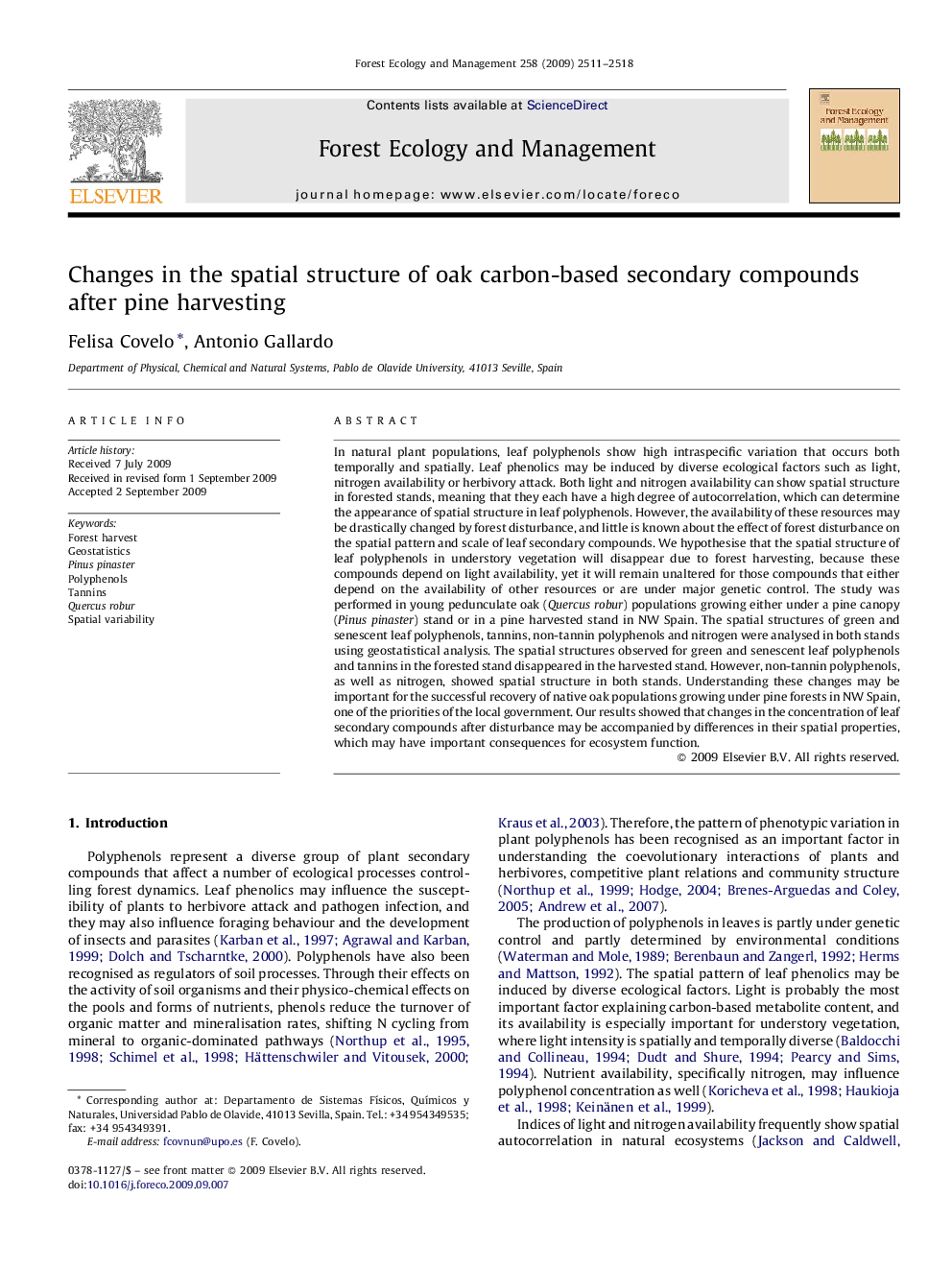| کد مقاله | کد نشریه | سال انتشار | مقاله انگلیسی | نسخه تمام متن |
|---|---|---|---|---|
| 88313 | 159297 | 2009 | 8 صفحه PDF | دانلود رایگان |

In natural plant populations, leaf polyphenols show high intraspecific variation that occurs both temporally and spatially. Leaf phenolics may be induced by diverse ecological factors such as light, nitrogen availability or herbivory attack. Both light and nitrogen availability can show spatial structure in forested stands, meaning that they each have a high degree of autocorrelation, which can determine the appearance of spatial structure in leaf polyphenols. However, the availability of these resources may be drastically changed by forest disturbance, and little is known about the effect of forest disturbance on the spatial pattern and scale of leaf secondary compounds. We hypothesise that the spatial structure of leaf polyphenols in understory vegetation will disappear due to forest harvesting, because these compounds depend on light availability, yet it will remain unaltered for those compounds that either depend on the availability of other resources or are under major genetic control. The study was performed in young pedunculate oak (Quercus robur) populations growing either under a pine canopy (Pinus pinaster) stand or in a pine harvested stand in NW Spain. The spatial structures of green and senescent leaf polyphenols, tannins, non-tannin polyphenols and nitrogen were analysed in both stands using geostatistical analysis. The spatial structures observed for green and senescent leaf polyphenols and tannins in the forested stand disappeared in the harvested stand. However, non-tannin polyphenols, as well as nitrogen, showed spatial structure in both stands. Understanding these changes may be important for the successful recovery of native oak populations growing under pine forests in NW Spain, one of the priorities of the local government. Our results showed that changes in the concentration of leaf secondary compounds after disturbance may be accompanied by differences in their spatial properties, which may have important consequences for ecosystem function.
Journal: Forest Ecology and Management - Volume 258, Issue 11, 10 November 2009, Pages 2511–2518